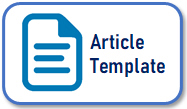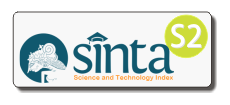The Influence of Intellectual Capital on the Performance of Employees: A Case Study of PT BPR Syariah Bangun Drajat Warga
DOI:
https://doi.org/10.14421/grieb.2021.092-09Keywords:
Intellectual Capital, Human Capital, Structural Capital, Customer Capital, and Performance of Employees.Abstract
The performance of employees is very influential for the success of an organization or company. To achieve the company goals, every company needs good performance from employees, both quality and quantity. This research was conducted to analyze how the influence of intellectual capital, consisting of human capital, structural capital, and customer capital, to the performance of employees of PT BPR Syariah Bangun Drajat Warga. This research uses the saturated sampling technique, which utilized all employees of PT BPR Syariah Bangun Drajat Warga as samples. This research uses primary data obtained from the survey using questionnaires and interviews. The data analysis methods in this research are validity testing, reliability testing, classical assumption testing, and multiple linear regression analysis using IBM SPSS Statistics 19. The results show that human capital and structural capital do not have a significant positive influence on the performance of employees. However, customer capital has a significant positive influence on the performance of employees.
Downloads
 Abstract viewed: 315 times
|
Abstract viewed: 315 times
|
 PDF downloaded = 305 times
PDF downloaded = 305 times
References
Alawy, & Faiz, A. (2010). Analisis modal intelektual dampaknya terhadap kinerja karyawan pada pt. gestcom bandung. Skripsi Universitas Komputer Indonesia.
Aulia, H, I. (2017). Pengaruh gaya kepemimpinan, komitmen organisasi, dan lingkungan kerja terhadap kinerja karyawan di bank syariah mandiri kcp yogyakarta kaliurang. Skripsi UIN Sunan Kalijaga Yogyakarta.
Bangun, & Wilson. (2012). Manajemen sumber daya manusia. Erlangga.
Barney, J. B. (1991). Firm resources and substained competitive adventage. Journal of Management, 17(1), 99-120.
Barokah, S., Wilopo, & Inggang, P, N. (2018). Pengaruh intellectual capital terhadap financial performance. Jurnal Administrasi Bisnis, 55(1), 132-140.
Bontis, N. (1998). Intellectual capital: an exploratory study that develops measures and models. Management Decision, 36(2), 63-76.
Bontis, N., William, C. C. K., & Stanley, R. (2000). Intellectual capital and business performance in malaysian industries. Journal of Intellectual Capital, 1(1), 85-100.
Carson, E., Ranzijn, R., Winefield, A. H., & Marsden, H. (2004). Intellectual capital: Mapping employee and work group attributes. Journal of Intellectual Capital, 5(3), 443-463.
Cooper, A. C., Gimeno-Gascon, F. J., & Woo, C. Y. (1994). Initial human and financial capital as predictors of new venture performance. Journal of Business Venturing, 9, 371-395.
Ghozali, I. (2005). Aplikasi analisis multivariate dengan program SPSS. Badan Penerbit Universitas Diponegoro.
Gisriana, Q., Mikial, M., & Hidayat, M. (2017). Pengaruh intellectual capital terhadap kinerja perusahaan yang tercatat di indeks Kompas 100 Bursa Efek Indonesia tahun 2013-2015. Jurnal Ilmiah Ekonomi Global Masa Kini, 8(22), 117-123.
Gogan, L. M., Artene, A., Sarca, I., & Draghici, A. (2016). The impact of intellectual capital on organizational performance. Social and Behavioral Sciences, 221, 194-202.
Hashim, M. J., Osman, I., & Alhabshi, S. M., (2015). Effect of intellectual capital on organizational performance. Social And Behavioral Sciences, 211, 207-214.
Helmiatin. (2015). Optimalisasi peran modal intelektual terhadap kinerja karyawan. Jurnal Etikonomi, 14(1), 51-68.
Helmiatin, Idrus, O., & Wati, I. (2016). The influence of intellectual capital on the performance of employees. American Academic Research New York Conference, 1-10.
Kerlinger. (2008). Rancangan penelitian. Gramedia Pustaka Utama.
Laudon, K. C., & Laudon, J. P. (2008). Sistem informasi manajemen: mengelola perusahaan digital. Salemba.
Luthans, F. (2005). Perilaku organisasi. Andi.
Mathis, R. L., & Jackson, J. H. (2011). Human resource management: Manajemen sumber daya manusia. Salemba.
McShane., S. L., & von Ginow, M. V. (2005). Organizational behaviour. McGraw-Hill.
Ruliana, P. (2014). Komunikasi organisasi: teori dan studi kasus. Rajawali Pers.
Sawarjuwono, T., & Kadir, A. P. (2003). Intellectual capital: Perlakuan, pengukuran dan pelaporan (Sebuah library research). Jurnal Akuntansi dan Keuangan,5(1), 35-57.
Sekaran, U. & Bougie, R. (2017). Metode penelitian untuk bisnis edisi 6 buku 1. Salemba Empat.
Sekaran, U. & Bougie, R. (2017). Metode penelitian untuk bisnis edisi 6 buku 2. Salemba Empat.
Setiadi, N. J. (2003). Perilaku konsumen: Perspektif kontemporer pada motif, tujuan, dan keinginan konsumen. Kencana.
Setiawan, W., & Saryono, O. (2017). Pengaruh gaya kepemimpinan, motivasi, dan disiplin kerja terhadap kinerja pegawai. Journal of Management, 1(1), 43-51.
Starovic, D., & Mar, B. (n.d). Understanding corporate value: Managing and reporting intellectual capital. Intellectual Capital by Chartered Institute of Management Accountants, 1-28.
Tan, H. P., David, P., & Phil, H. (2007). Intellectual capital and financial returns of companies. Journal of Intellectual Capital, 8(1), 76-95.
Tumwine, S., Sentrine, N., & Nixon, K. (2014). Human capital elements and their influence on performance: evidence from uganda’s manufacturing firms. Global Journal of Management and Business Research (D), 14(2), 18-28.
Ulum, I. (2009). Intellectual capital: konsep dan kajian empiris. Graha Ilmu.
Volkov, D., & Garanina, T. (2007). Intangible assets: Importance in the knowledge-based economy and the role in value creation of a company. Jornal of Knowledge Management, 5(4), 539-550.
Yunus, H. S. (2010). Metodologi penelitian wilayah kontemporer. Pustaka Pelajar.
Downloads
Published
Issue
Section
License
Global Review of Islamic Economics and Business is licensed under a
Creative Commons Attribution-ShareAlike 4.0 International License



















